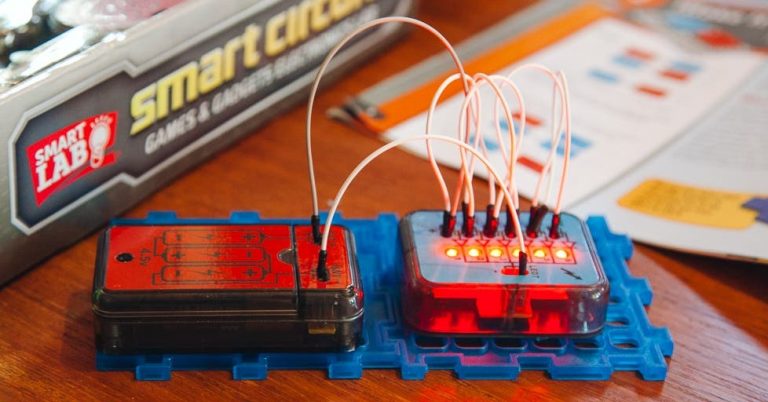The 3 Best Home Air Quality Monitors of 2025

Best for…
The air in most homes contains more CO2 than outdoor air does—sometimes a lot more, especially in modern, tightly sealed houses. The elevated levels are primarily the result of our own respiration and of natural-gas stoves and ovens, and CO2 can build up in enclosed spaces to concentrations that impair cognitive function. If you’d specifically like to measure the CO2 in your indoor air, the SAF Aranet 4 CO2 monitor is our pick. (It does not give a complete picture of your indoor air quality. A home or office could have low CO2 levels but high particulate or VOC levels, for example, and you’d need a device to measure them.)
The Aranet 4’s non-dispersive infrared (NDIR) sensor is considered the most accurate and durable type outside of laboratory-grade equipment. Its screen displays the CO2 reading and any “unhealthy level” alerts clearly. And its app—compatible with iOS and Android—can also send alerts and show longer trends in your CO2 levels, helping you take proactive steps to keep them in the healthy range. (Thankfully, the solution is usually dead-simple: Open a few windows and let fresh air in until the level drops to a good number, especially if you’ve got a lot of guests or when you’re cooking with natural gas. HEPA air purifiers and HVAC filters make no difference because they capture particles, not gases.)
In choosing the Aranet 4, we spoke with Alex Huffman, an atmospheric chemist at the University of Denver. During the pandemic, he coauthored a study on CO2 and its relation to risk of coronavirus transmission, and some of his colleagues have been testing CO2 monitors that are aimed at homeowners. “There’s no question that there are consumer CO2 sensors out there that suck, which is not too surprising,” he said. “You’ve probably heard that the first thing you want to do is look for an NDIR sensor, non-dispersive infrared, and that’s absolutely true, but—and I don’t have a solution to this problem—what I’ve heard from colleagues is that there are increasing numbers of these sensors that purport or claim to be NDIR but aren’t. They’re just straight-up lies.”
The Aranet 4 uses a genuine NDIR sensor. Inside the device, infrared light is directed through air-sampling tube. Because CO2 molecules absorb a specific infrared wavelength, a detector at the far end of the tube simply measures how much of it gets eliminated from the light sample, thus giving an accurate measure of how much CO2 is in the air. NDIR sensors are durable, too, with an expected lifespan of seven years, helping offset their relatively high cost. The Aranet 4 also measures temperature and relative humidity, adding a bit more utility.
CO2 monitors saw a surge in use in 2021 after researchers at the University of Colorado Boulder demonstrated that CO2 levels could be used as a proxy for the concentration of coronavirus, and therefore the risk of transmission, in an indoor public space. Concerns over the combustion byproducts, including CO2, from gas stoves have also risen. And growing awareness that high CO2 levels can impair brain function has also been driving interest in the use of CO2 monitors recently, to help ensure that crowded spaces like classrooms and offices have enough ventilation.
It makes sense that CO2 would build up in places where many people congregate. But—and I may just be showing my own naiveté here—it had never occurred to me that CO2 could be a concern in an uncrowded home. So I didn’t expect to learn much when I set up the Aranet in my apartment a few months ago.
In fact I learned a lot, and my experience may help you decide whether the Aranet is worth your investment. I set it up on a hot summer day—one of the few weather conditions when my wife and I keep all the windows closed and turn off our apartment’s fresh-air ventilation. I discovered that our air contained almost 900 parts-per-million of CO2, more than twice that of fresh outdoor air. In the course of an hour, it rose above 1,000 ppm, triggering a yellow “cause for concern” alert from the Aranet—solely the result of my breathing in the same large (25-by-30-foot) room as the monitor.
Another day, I baked bread in our gas oven, and in the course of 45 minutes the CO2 level rose from a healthy sub-500 ppm to over 1,600, well past the Aranet’s red-alert level of 1,400. A quick stir-fry on our stove’s power burner sent it from 600 to 1,550. Just making my morning single-serving pot of stovetop espresso, which takes about 7 minutes on the smallest burner, can raise the CO2 level by a hundred points.
On the other hand, I found that by simply keeping one of our two fresh-air vents slightly open and a single window cracked open by a quarter of an inch, we maintain a healthy level of about 550 ppm (if the stove or oven isn’t on); the trickle of fresh air is enough to keep the CO2 under control. And when I’m cooking or baking, fully opening one window and the vents for 20 minutes drops the indoor CO2 level close to that of the fresh air outside.







